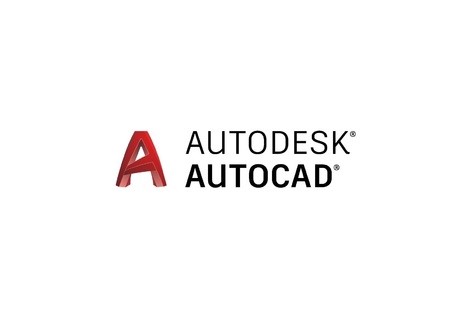Course Information
- Course Price $250
- Total Students 800+
- Course Duration 4 Weeks
Description
This course is aimed at those with absolutely no prior experience in AutoCAD. It is also helpful to those who may have learned the software in the past but forgotten how to use it. The course is designed to get you up & running with AutoCAD quickly by teaching you the things you need to know without long-winded explanations of techniques and commands that are no longer used. As a CAD engineer with over 25 years of industry experience, I have taught many people to use AutoCAD over the years. I still use CAD software every day on major engineering projects and am shocked when I see the items still being taught in schools, books, and other online courses. You do not need to enroll on a 2-year course, read a 500-page book or enroll on an online course that is over 15 hours long. Much of this is padding to make the course look more comprehensive by teaching commands that nobody actually uses in the workplace. AutoCAD can have a reputation of being complicated but much of this is down to the fact that so many are teaching out of date techniques. Also, many of the teaching materials insist on beginning the course by explaining what every single button and command does which is unnecessary and tedious. Other courses like to start each chapter with a new example and this constant restarting means the student never produces anything substantial and easily gets bored. Over the years I have refined my method of teaching CAD software so that I only teach the techniques that are required and none of the outdated methods that you will never need. My method of teaching is not just to describe each command separately but to get the student up and running early in the course creating a realistic project. This project will grow as different commands are introduced and in this way the student can see clearly how the different techniques are actually used rather than just copying small examples.
Benefits
- Most comprehensive AutoCAD course online
- Self-assessment quizzes and Practice drawings at the end of every section
- More than 150 AutoCAD command list and AutoCAD quizzes eBook included
- New features of AutoCAD 2018, 19, 20 and 2021 version included
- Taught by certified AutoCAD professional
- Extra practice drawings and projects at the end of the course
This is the only course you will ever need to learn AutoCAD right from scratch. Major Highlights of The Course
AutoCAD syllabus
- AUTOCAD Starting AutoCAD
- AutoCAD Screen Components
- Drawing Area
- Command Window
- Navigation bar
- Status bar
- Invoking Commands in AutoCAD
- Keyboard
- Ribbon
- Application Menu
- Tool Palettes
- Menu Bar
- Toolbar
- Shortcut Menu
- AutoCAD Dialog Boxes
- Starting a New Drawing
- Open a Drawing
- Start from Scratch
- Use a Template
- Use a Wizard
- Saving Your Work
- Save Drawing as Dialog box
- Using the Drawing Recovery Manager to Recover
- Files Closing a Drawing
- Opening an Existing Drawing
- Opening an Existing Drawing Using the Select File Dialog Box
- Opening an Existing Drawing Using the Startup Dialog Box
- Opening an Existing Drawing Using the Drag and Drop Method
- Quitting AutoCAD
- Creating and Managing Workspaces
- Creating a New Workspace
- Modifying the Workspace Settings
- Autodesk Exchange
- Home
- Dynamic Input Mode
- Enable Pointer Input
- Enable Dimension Input where possible
- Show command prompting and command input near the
- crosshairs Drafting Tooltip Appearance
- Drawing Lines in AutoCAD
- The Close Option
- The Undo Option
- Invoking tools Using Dynamic INPUT/Command
- Prompt Coordinate Systems
- Absolute Coordinate System
- Relative Coordinate System
- Relative Polar Coordinates
- Direct Distance Entry
- Erasing Objects
- Cancelling and Undoing a Command
- Object Selection Methods
- Window Selection
- Window Crossing Method
- Drawing a Circle
- BASIC Display Commands
- Setting Units Type and Precision
- Specifying the Format
- Specifying the Angle Format
- SETTING the Limits OF A DRAWING
- Drawing Arcs
- Drawing Rectangles
- Drawing Ellipses
- Drawing Regular Polygon
- Drawing Polylines
- Placing Points
- Drawing Infinite Lines
- Writing a Single Line Text
- Introduction
- Understanding the Concept and use of LAYERS
- Advantages of Using Layers
- Working with Layers
- Creating New Layers
- Making a Layer Current
- Controlling the Display of Layers
- Deleting Layers
- Object Properties
- Changing the Color
- Changing the Line type
- Changing the Line weight
- Changing the Plot Style
- Properties Palette
- Quick Properties Palette
- Drafting Settings dialog box
- Setting Grid
- Setting Snap
- Snap Type
- Drawing Straight Lines using the Ortho Mode
- Working with Object Snaps
- Auto Snap
- Endpoint
- Midpoint
- Nearest
- Centre
- Tangent
- Quadrant
- Intersection
- Apparent Intersection
- Perpendicular
- Node
- Insertion
- Snap to None
- Parallel
- Extension
- From
- Midpoint between 2 Points
- Temporary Tracking Point
- Combining Object Snap Modes
- Running Object Snap Mode
- Overriding the Running Snap
- Cycling through Snaps
- Using Auto Tracking
- Object Snap Tracking
- Polar Tracking
- Auto Track Settings
- Function and Control Keys
- Editing Sketches
- Moving the Sketched Objects
- Copying the Sketched Objects
- Creating Multiple Copies
- Creating a Single Copy
- Offsetting Sketched Objects
- Rotating Sketched Objects
- Scaling the Sketched Objects
- Filleting the Sketches
- Chamfering the Sketches
- Trimming the Sketched Objects
- Extending the Sketched Objects
- Stretching the Sketched Objects
- Lengthening the Sketched Objects
- Arraying the Sketched Objects
- Rectangular Array
- Polar Array
- Path Array
- Mirroring the Sketched objects
- Text Mirroring
- Introduction to Grips
- Types of Grips
- Editing a Polyline by Using Grips
- Editing Gripped Objects
- Changing the Properties Using the PROPERTIES
- Pale Matching the Properties of Sketched Objects
- Cycling Through Selection
- Managing Contents Using the Design enter
- Autodesk Seek design content Link
- Displaying Drawing Properties
- Basic Display Options
- Redrawing the Screen
- Regenerating Drawings
- Zooming Drawings
- Real-time Zooming
- All Option
- Centre Option
- Extents Option
- Dynamic Option
- Previous Option
- Window Option
- Scale Option
- Object Option
- Zoom In and Out
- Panning Drawings
- Panning in Real time
- Annotative Objects
- Annotation Scale
- Assigning Annotative Property and Annotation Scales
- Customizing Annotation Scale
- Multiple Annotation Scales
- Assigning Multiple Annotation Scales Manually
- Assigning Multiple Annotation Scales Automatically
- Controlling the Display of Annotative objects
- Creating Text
- Writing Single Line Text
- Entering Special Characters
- Creating Multiline Text
- Text Window
- Text Editor Tab
- Editing Text
- Editing Text Using the DDEDIT Command
- Editing Text Using the Properties Palette
- Modifying the Scale of the Text
- Inserting Table in the Drawing
- Table style Area
- Insert options Area
- Insertion behavior Area
- Column and row settings Area
- Set cell styles Area
- Creating a New Table Style
- Starting table Area
- General Area
- Cell styles Area
- Setting a Table Style as Current
- Modifying a Table Style
- Modifying Tables
- Substituting Fonts
- Specifying an Alternate Default Font
- Creating Text Styles
- Determining Text Height
- Creating Annotative text
- Need for Dimensioning
- Dimensioning in AutoCAD
- Fundamental Dimensioning Terms
- Dimension Line
- Dimension Text
- Arrowheads
- Extension Lines
- Leader
- Centre Mark and Centrelines
- Alternate Units
- Tolerances
- Limits
- Associative Dimensions
- Definition Points
- Annotative Dimensions
- Selecting Dimensioning Commands
- Using the Ribbon and the Toolbar
- Using the Command Line
- Dimensioning a Number of Objects Together
- Creating Linear Dimensions
- DIMLINEAR Command Options
- Creating Aligned Dimensions
- Creating Arc Length Dimensions
- Creating Rotated Dimensions
- Creating Baseline Dimensions
- Creating Continued Dimensions
- Creating Angular Dimensions
- Dimensioning the Angle between Two Nonparallel
- Lines Dimensioning the Angle of an Arc
- Angular Dimensioning of Circles
- Angular Dimensioning based on Three Points
- Creating Diameter Dimensions
- Creating Radius Dimensions
- Creating Jogged Linear Dimensions
- Creating Ordinate Dimensions
- Maintaining Equal Spacing between
- Dimensions Creating Inspection Dimensions
- Inspection Label
- Dimension Value
- Working with True Associative Dimensions
- Inspection Rate
- Removing the Dimension Associatively
- Converting a Dimension into a True Associative Dimension
- Drawing Leaders
- Multileader
- Adding leaders to existing Multileader
- Removing Leaders from Existing Multileader
- Aligning Multileaders
- Distribute
- Make leader segments Parallel
- Specify Spacing
- Use current spacing
- Geometric Dimensioning and Tolerance
- Geometric Characteristics and Symbols
- Adding Geometric Tolerance
- Feature Control Frame
- Geometric Characteristics Symbol
- Tolerance Value and Tolerance Zone Descriptor
- Material Condition Modifier
- Datum
- Complex Feature Control Frames
- Composite Position Tolerance
- Projected Tolerance Zone
- Creating Annotative Dimensions, Tolerances, Leaders, and Multileaders
- Editing Dimensions Using Editing Tools
- Editing Dimensions by Stretching
- Editing Dimensions by Trimming and Extending
- Flipping Dimension Arrow
- Modifying the Dimensions
- Editing the Dimension Text
- Updating Dimensions
- Editing Dimensions with Grips
- Editing Dimensions using the Properties Palette
- Properties Palette (Dimension)
- Properties Palette (Multileader)
- Model Space and Paper Space Dimensioning
- Using Styles and Variables to Control Dimensions
- Creating and Restoring Dimension Styles
- New Dimension Style dialog box
- Controlling the Dimension Text Format
- Fitting Dimension Text and Arrowheads
- Formatting Primary Dimension Units
- Formatting Alternate Dimension Units
- Formatting the Tolerances
- Creating and Restoring Multileader Styles
- Modify Multileader Style dialog box
- Model Space and Paper Space/Layouts
- Model Space Viewports (Tiled Viewports)
- Creating Tiled Viewports
- Making a Viewport Current
- Joining Two Adjacent Viewports
- Paper space viewports (Floating Viewports)
- Creating Floating Viewports Creating
- Rectangular Viewports Creating
- Polygonal Viewports
- Converting an Existing Closed Object into a Viewport Temporary Model Space
- Editing Viewports
- Controlling the Display of Objects in Viewports
- Locking the Display of Objects in Viewports
- Controlling the Display of Hidden Lines in
- Viewports Clipping Existing Viewports
- Maximizing Viewports
- Inserting Layouts
- Inserting a Layout Using the
- Wizard Defining Page Settings
- Controlling the Display of Annotative Objects in Viewports
- Plotting Drawings in AutoCAD
- Plotting Drawings Using the Plot Dialog
- Box Page setup Area
- Printer/plotter Area
- Paper size Area
- Number of copies
- Area Plot area
- Plot offset (origin set to printable area)
- Area Plot scale Area
- Plot style table (pen assignments)
- Area Shaded viewport options Area
- Plot options
- Area Preview
- Adding Plotters
- The Plotter Manager
- Tool Using Plot Styles
- Adding a Plot Style
- Hatching
- Hatch Patterns
- Hatch Boundary
- Hatching Drawings Using the Hatch
- Tool Panels in the Hatch Creation Tab
- Boundaries Panel
- Pattern Panel
- Properties Panel
- Origin Panel
- Options Panel
- Match Properties
- Setting the Parameters for Gradient
- Pattern Creating Annotative Hatch
- Hatching the Drawing Using the Tool
- Palettes Drag and Drop Method
- Select and Place Method
- Hatching Around Text, Dimensions, and Attributes
- The Concept of Blocks Advantages
- of Using Blocks Drawing
- Objects for Blocks Converting
- Entities into a Block
- Inserting Blocks
- Creating and Inserting Annotative
- Blocks Block Editor
- Adding Blocks in Tool Palettes
- Drag and Drop Method
- Modifying Existing Blocks in the Tool Palettes
- Layers, Colors, Line types, and Line weights for
- Blocks Nesting of Blocks
- Creating Drawing Files using the Write Block Dialog
- Box Exploding Blocks Using the XPLODE
- Command Renaming Blocks
- Deleting Unused Blocks
- Editing Constraints to Blocks



